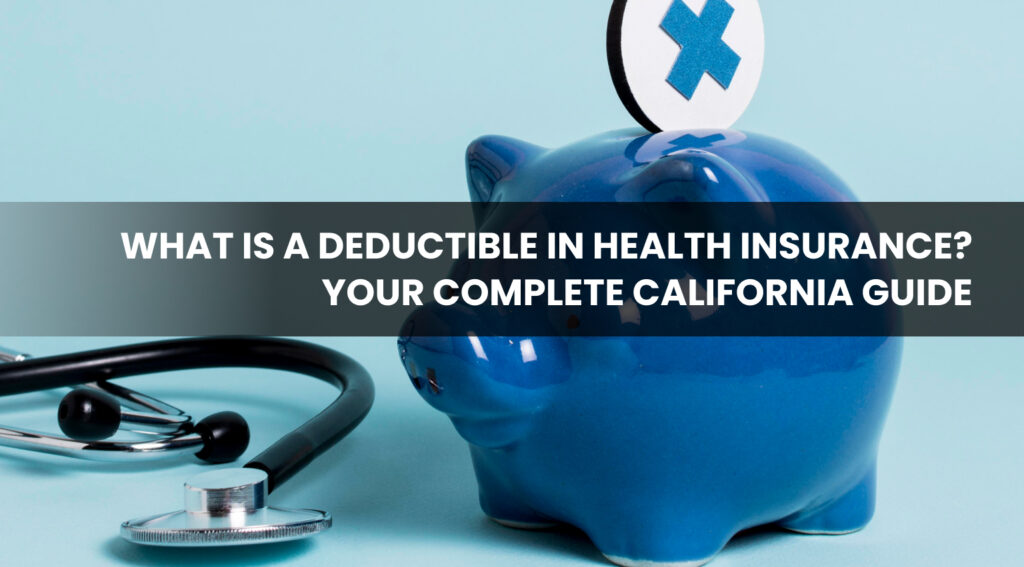
What Is Deductible in Health Insurance? Your Complete California Guide
Sometimes, learning about health insurance can feel like cracking a code. It might get overwhelming with all of the words, such as copay, coinsurance, and out-of-pocket maximums. One of the most important components in this jigsaw is your deductible.
Stated differently, your deductible is the amount of medical bills you are responsible for paying out of pocket before your insurance plan begins to split the costs with you. However, choosing a plan that will benefit your health and save money over time may be a little simpler if you understand how deductibles operate.
Let’s understand.
How a Deductible Works
Imagine your deductible is $2,000. And if you land in the hospital and your bill is $5,000, the first $2,000 is what you’ll owe. And then your health insurance takes over and begins paying its part. You could still have copays or coinsurance, but you’re no longer setting the bill yourself.
There’s a reason deductibles matter; they determine the amount you pay out of pocket before your insurance company starts helping pay your bills.
Deductible vs. Other Costs: Clearing the Confusion
It’s common to mix up deductibles with other costs, so here’s a clear picture.
| Term | What It Means | When You Pay It |
| Deductible | The total amount you must pay before insurance shares costs | Once a year, before your plan starts covering services |
| Copay | A fixed dollar amount (e.g., $25 for a doctor visit) | Usually at the time of the appointment |
| Coinsurance | A percentage of costs you split with your insurer (e.g., 20% you, 80% insurance) | After you’ve met your deductible |
| Out-of-Pocket Maximum | The most you’ll pay in a year before insurance covers 100% of costs | Accumulates as you use healthcare services |
Why Deductibles Exist
The purpose of deductibles is to divide accountability between you and your insurance provider. Higher deductible plans typically offer cheaper monthly costs, which appeals to those who don't often visit the doctor. Conversely, smaller deductible plans have higher monthly premiums but shield you from significant out-of-pocket costs in the event that you require ongoing medical care.
Both choices are available in California through commercial insurers and on Covered California. Your risk tolerance, financial security, and health status will all play a role in your decision.
Everyday Impact of a Deductible
Here’s what a deductible means in real life:
- If you’re healthy and rarely visit the doctor, you may never hit your deductible in a year. In that case, you’ll mostly just pay for small things like copays or prescriptions.
- If you have a surgery or a chronic condition, you’ll likely meet your deductible early, and your insurance will begin covering a much larger portion of your care for the rest of the year.
This balance between monthly premiums and annual deductibles is why it’s so important to think carefully about your lifestyle and health before picking a plan.
The Bottom Line
When it comes to the amount of a deductible in health insurance, what you’re really talking about is determining how much risk you want to take on before your insurance shares the burden.
This bit of math is important because selecting the right deductible can save you money and even some frustration.
Talk to an Expert Before You Decide
Not all health insurance is created equal. Selecting the wrong deductible amount could cause you to pay more than necessary. That’s where we come in.
At e360 Insurance Services, we take the confusion out of buying health insurance in California and help you get a policy that is right for your needs.
Ready to make health insurance simple?
Contact e360 Insurance Services today and let us guide you to the right plan.
